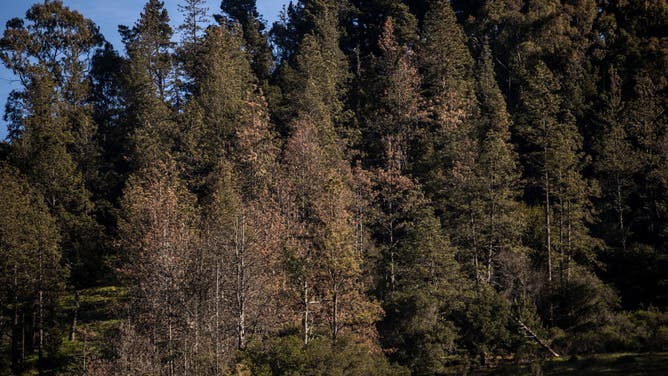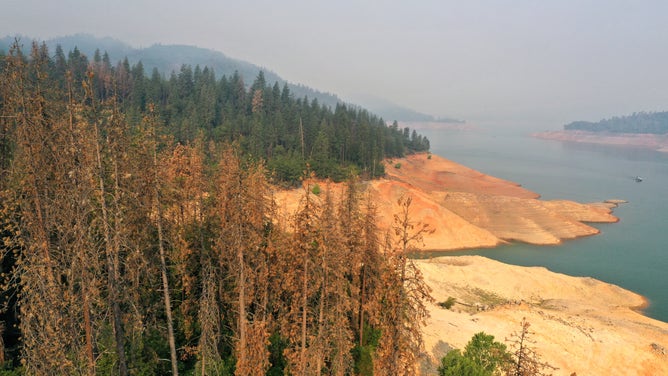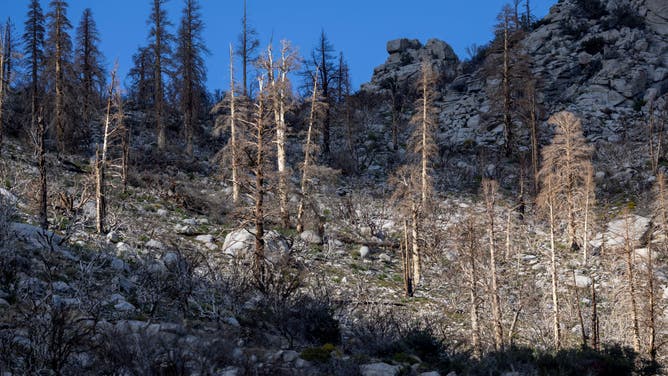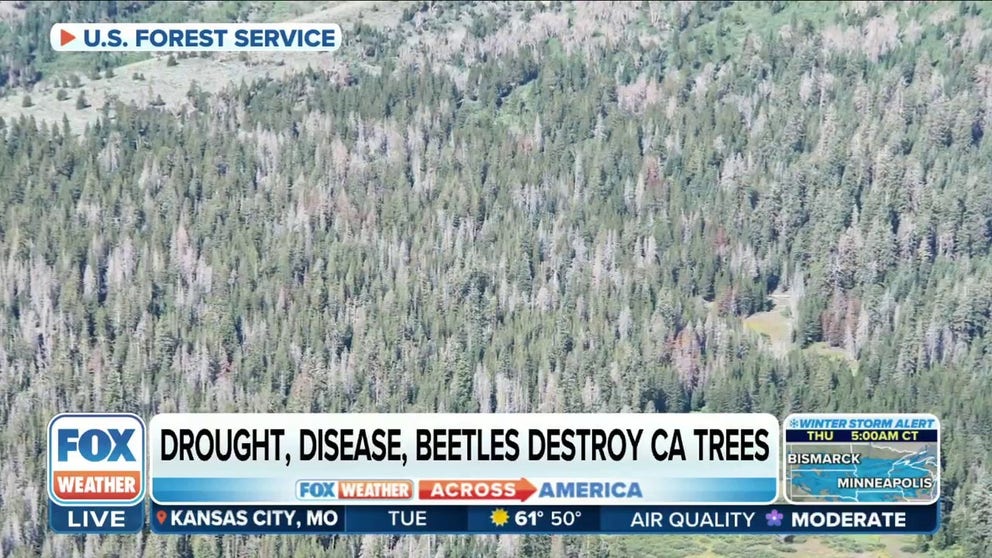California tree deaths spike, drought and beetles are to blame, USFS says
California tree deaths spiked in 2022 after 13 years of drought. The Forest Service counted 36.3 million dead trees in 2022 compared to 9.5 million last year.
Millions of drought weakened trees dying across California's forests
Winter rains give the U.S. Forest Service hope that they can stem the mass die-off of trees in the state's forests. FOX Weather's Max Gorden explains how the years of drought have killed so many trees.
Millions of trees in California’s forests are dying, and the U.S. Forest Service says that drought, disease and a destructive beetle are to blame.
The U.S. Forest Service found that 36.3 million trees died, nearly four times the amount in 2021, with 9.5 million dead trees. More than three-quarters of the dead trees were true fir, which are species of the pine family.
And an increased number of dead trees and dry vegetation could mean an increased risk of wildfires.
HOW WINTER'S ATMOSPHERIC RIVER STORMS COULD SUPERCHARGE CALIFORNIA'S WILDFIRE SEASON

File: Dead trees in northern California.
(Stephen Lam/The San Francisco Chronicle / Getty Images)
Why the die-off?
Exceptional drought weakened the trees and left them susceptible to deadly diseases and beetles, according to the Forest Service. They also claim that aggressive firefighting efforts over the last century created overgrown forests.
Increased competition for resources allowed disease and tree-eating beetles such as the mountain pine beetle to infest the trees.
When beetle eggs hatch, the larvae mine the area under the bark, which eventually cuts off the tree’s supply of nutrients, according to the Department of Interior. The beetles also carry a fungus that dehydrates the tree and inhibits the tree’s natural defenses against the beetle.
MEXICAN FRUIT SENT PACKING AFTER BORDER PATROL FINDS RARE BEETLE

The 2022 insect and disease survey.
(US Forest Service and USDA / FOX Weather)
‘EXTREME’ DROUGHT ERASED FROM CALIFORNIA FOR FIRST TIME IN YEARS, WILL IT LAST?
Will winter floods help?
In January, for the first time in almost three years, California was no longer in "extreme drought," according to NOAA. Atmospheric river storms dropped a record 11 inches of rain across the entire state in just three weeks between December and January, but the Forest Service's Jeffrey Moore thinks the situation, which took years in the making, will take years to reverse.
"What really matters is whether or not we get those late, spring, February, March, types of precipitation. That’s very important. If that happens, that’ll help the situation quite a bit," he said. "But the bark beetle populations are really huge over the landscape level, and they will continue to kill trees even with this one wet year."
Experts with the Forest Service say that the state needs two or three years of above-average precipitation before the drought is reversed and the forest health returns to normal. They also say that crews need to thin out smaller trees to give the larger ones more resources.

File: Dead trees on the banks of a very low Shasta Lake in 2021.
( Justin Sullivan / Getty Images)
WHAT CALIFORNIA'S EXCESSIVE SNOW MEANS FOR SPRING AND THE MEGADROUGHT
Much of California has been dry this February, but the FOX Forecast Center says there will be some rain for the Golden State this week. Time will tell if enough will fall across the Central Sierra Nevada Range and the northern interior of the state, where the USFS says the "mortality was particularly severe and widespread."
Deja vu die off
California suffered a die-off after the 2012-2016 drought, which the California Department of Forestry and Fire Protection called an "unprecedented drought." Again, the drought, combined with record temperatures and an infestation of native bark beetles killed large patches of forest.
"Since 2010, an estimated 129 million trees have died in California’s national forests due to conditions caused by climate change, unprecedented drought, bark beetle infestation and high tree densities," said the Forest Service in 2017.
That drought prompted Cal Fire and the California Governor's Office of Emergency services to form the Tree Mortality Task Force and Regional Tree Mortality Response teams.

File: Dead trees stand where a forest burned 6 years earlier.
( David McNew / Getty Images)
"Forest health is a top priority for the Forest Service," said Jennifer Eberlien, Regional Forester for the Pacific Southwest Region, in a statement. "The agency’s 10-year strategy to address the wildfire crisis includes removal of dead and dying trees in the places where it poses the most immediate threats to communities. Working together, we can mitigate the risks of tree mortality and high-intensity wildfire by reducing the overabundance of living trees on the landscape."
In 2022, Governor Gavin Newsom asked for an additional $1.2 billion from federal coffers to increase wildfire resistance. It is part of the $2.7 billion multi-year package requested to bolster wildfire preparedness through programs like tree thinning and clearing.
The Forest Service conducts this survey every year. Crews fly in small planes over California forests and counted the number of red-brown trees. The color is a sign that the tree recently died.
